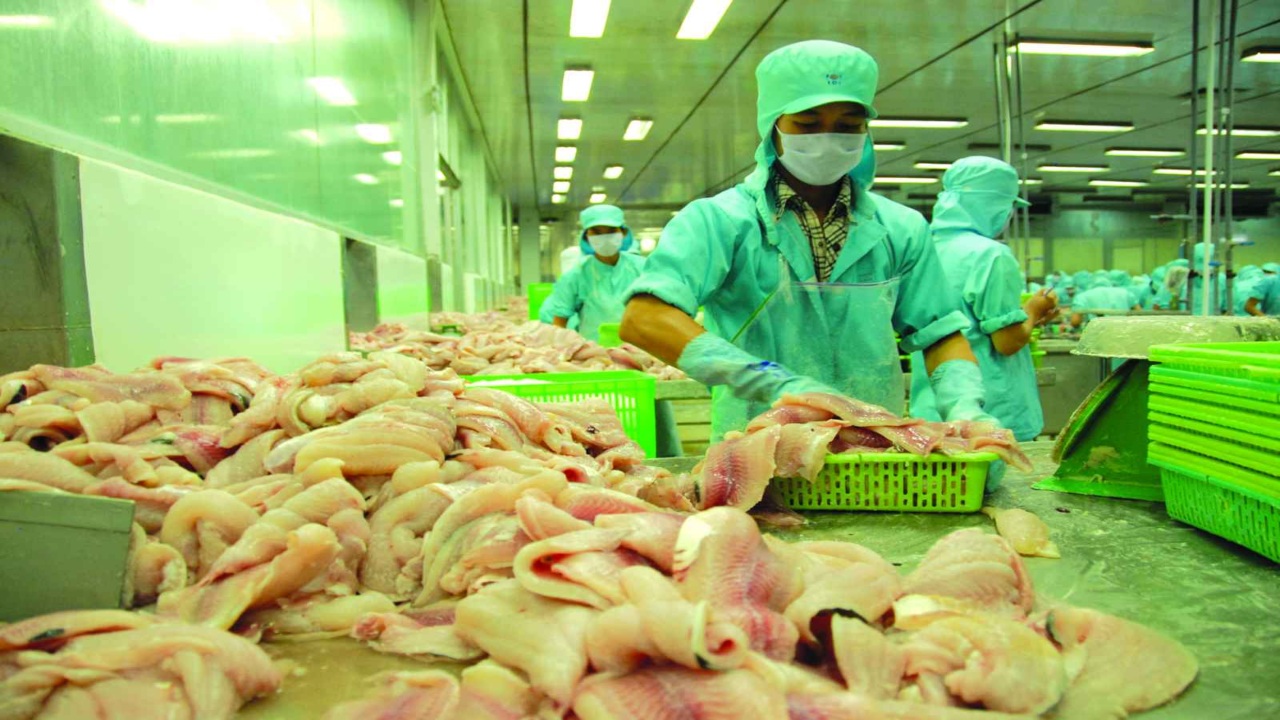Vietnam’s economy still relies heavily on the agro-forestry-fishery sector, as the trade surplus of this group accounted for over 75% of the national figure in 2022. As a result, optimizing the sector’s utilization is critical, as it is the economy’s internal strength.
Real achievements
The agro-forestry-fishery sector was a bright spot in the economy in 2021 and 2022, with major export achievements from foreign direct investment (FDI) enterprises. Moreover, this sector has recently proven its role as a pedestal for the economy and social stability. Thanks to this sector’s support, Vietnam did not have to struggle with increases in food prices during that period. This also made it easier for the Government to apply economic management measures and control inflation at 3.15% in 2022.
Amid economic uncertainties and supply chain disruptions due to China’s zero-Covid policies and the Russia-Ukraine conflict, Vietnamese agriculture has done its best to satisfy the demands of the global market.
The agro-forestry-fishery sector should be recognized and honored for its huge contributions to the achievements of the Vietnamese economy in 2022. Compared to Vietnam’s gross domestic product (GDP) growth rate of 8.02%, the agro-forestry-fishery sector just expanded by 3.36%, contributing 5.11% to the total added value of the economy. This figure was much lower than the contributions of the industrial, construction and service sectors. However, the export turnover of this sector reached over US$53 billion for the very first time, amounting to 14.2% of the whole economy’s figure. Among those, some 11 items achieved over US$1 billion in export turnover. More importantly, the trade surplus of this economic sector was estimated at US$8.5 billion, accounting for over 75% of the national figure.
This is considered a remarkable result, given the previous years’ low levels of Government and foreign investment in the agro-forestry-fishery sector. Specifically, the amount of capital poured into this sector just accounted for 5.69% of the total social investment in the period of restructuring agriculture from 2013 to 2017, according to the Ministry of Agriculture and Rural Development. Meanwhile, this figure in 2025 was recorded at 8%.
Vietnam was home to 14,400 agricultural enterprises and 19,100 cooperatives by the end of 2021, which is rather small compared to the total of 684,300 operational enterprises.
The number of newly registered FDI projects in the agricultural sector in the 2009-2021 period stood at 1,984, accounting for only 5.7% of the total number of investment projects in Vietnam. Those projects had total registered capital of US$17.64 billion or 4.3% of the total figure in the country.
However, these positive results did not surprise many economic experts. According to research by Dr. Bui Trinh, the agro-forestry-fishery sector has high spillover effects on added value and low ones on imports. For example, among the 27 sub-sectors in Vietnam’s inter-sectoral balance sheet, some 22 could meet the above criteria.
The agro-forestry-fishery sector always saw its spillover coefficients to the added value of above 0.61 in 2012, 2016, and 2019, while that of the industrial sector never exceeded the threshold of 0.533.
However, the lowest spillover coefficient to imports of the industrial sector was recorded at 0.467, while that of the agro-forestry-fishery sector was less than 0.39 in those years. That explains why people believe they can get rich from agriculture.

Main roads and shortcuts
Vietnam’s economy will face difficulties in 2023 as the inflation rates in the main export markets, such as the United States and Europe, are predicted to escalate. Moreover, the increasing risk of global economic recession greatly affects consumer demand, especially in the agro-forestry-fishery sector.
Given the huge challenges in 2023, the agricultural industry only aimed to achieve a 3% growth rate and US$54 billion in export turnover, the same figure as in 2022. However, this target does not seem easy to fulfill.
The year 2022 marked a bright new door for agricultural exports to China as the country gradually phased out its zero-Covid policies. The first batch of durian was formally exported to China in September 2022 in accordance with the protocol signed between the Vietnam Ministry of Agriculture and Rural Development and the China General Administration of Customs two months earlier. Until October 2022, Vietnam’s durian export turnover to China reached nearly US$50 million.
With the advantages of geographic location and a favorable climate, Vietnam can grow durian in many places with a year-round harvest. The hope for Vietnamese durian to gain an export turnover of over US$1 billion will likely materialize in 2023.
Formal export is considered a good way for Vietnamese durians and other fruits to enter the Chinese market. It helps avoid the situation of cargo trucks with agricultural products being stranded at the border gates waiting for customs clearance. Recently, many cargo trucks were forced to return to the domestic market and sell their products cheaply.
In the long term, Vietnamese agricultural products formally exported to China will not stand at the current number of 13. Whether it far exceeds the target or not depends entirely on the negotiating skills of the managers.
It is necessary to develop a professional mindset in dealing with one of the most desirable markets in the world. Many things must be carefully considered and determined, from product standards, quality control, technical regulations related to fertilizers and pesticides, organic production certificates, green products for middle- and high-class customers, as well as the establishment of specialized trade promotion organizations for this market.
This strategy should also be considered a basis for Vietnam’s agro-forestry-fishery products to enter other traditional markets in 2023, besides the target one of China.
Additionally, Vietnamese cashews have successfully entered some niche markets, a leader of the Vietnam Chamber of Commerce and Industry shared at a seminar at the end of 2022.
From their market analysis and international market seminars recently, experts discovered some great niche markets for Vietnamese cashews, such as Egypt, Hong Kong (China), and Israel. The cashew price is about US$8,000/ton, twice as high as that in other large markets such as the U.S., China and Europe.
For Vietnamese businesses to access these markets successfully, the authorities should publicly announce general data on imports and exports, as well as provide market analysis, market orientation, the abilities of competitors, market demand fluctuations, adjustments in export and import policies and other objective factors affecting trading activities.
These factors will assist businesses in determining the volume of production material required in the short and long terms, as well as in making wise investments in post-harvest processing technology and other areas to meet the needs of the targeted markets.
Internal strengths
The agro-forestry-fishery sector should be given more opportunities to further exploit the domestic market, which is under less pressure from conflicts and global economic instability. It is a paradox that Vietnamese people find it hard to buy fine coffee, although Vietnam is the second largest coffee exporter worldwide, according to a director of an agricultural enterprise.
The story of exporting wood and wood products in 2022 is just the tip of the iceberg. Although some products achieved over US$3 billion in export turnover, the others were doubted for their origins, including hard plywood, wooden cabinets and dressing tables.
Up to two-thirds of the Vietnamese timber industry are small, medium-sized enterprises and household businesses. They do not have the potential and capacity to conduct market research, material origin studies, etc. Hence, it is understandable that they import raw materials from China, some of which have unknown origins. As a result, those enterprises will negatively affect the development of the entire industry.
Once the key export products are clearly identified, the authorities should draw up a master plan for raw material supply or at least guide enterprises on how to enter international markets in accordance with the requirements of free trade agreements.
Moreover, the authority should be proactive in supplying agricultural materials for the industry, such as animal feed, fertilizers and pesticides. It is considered an urgent requirement for Vietnam to successfully undertake the journey to own one of the leading agriculture sectors in the world in 2050.
Great ambitions require huge investments. Public investment should not be focused entirely on infrastructure projects such as canals or dikes for agriculture. The authority should not repeat the same mistakes as they did with the Ninh Binh Fertilizer Plant project.









